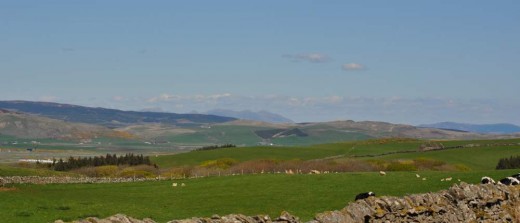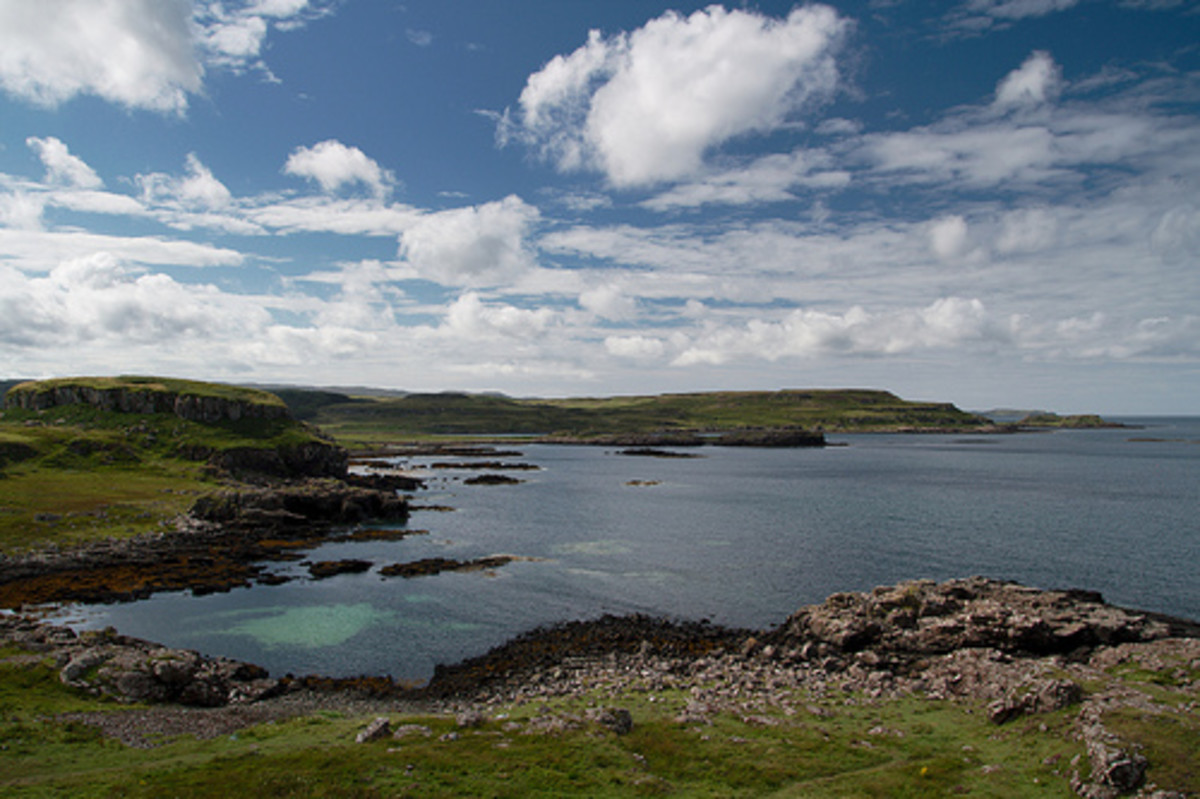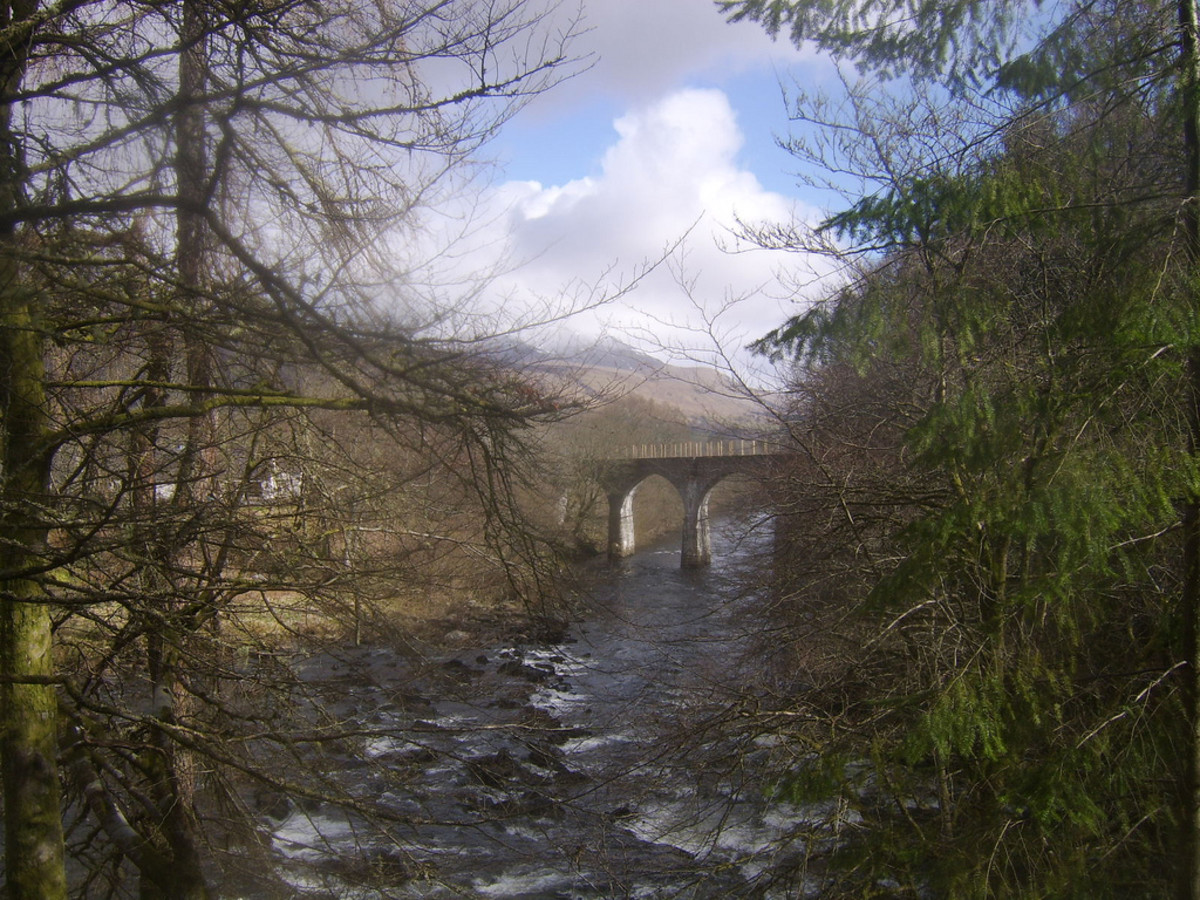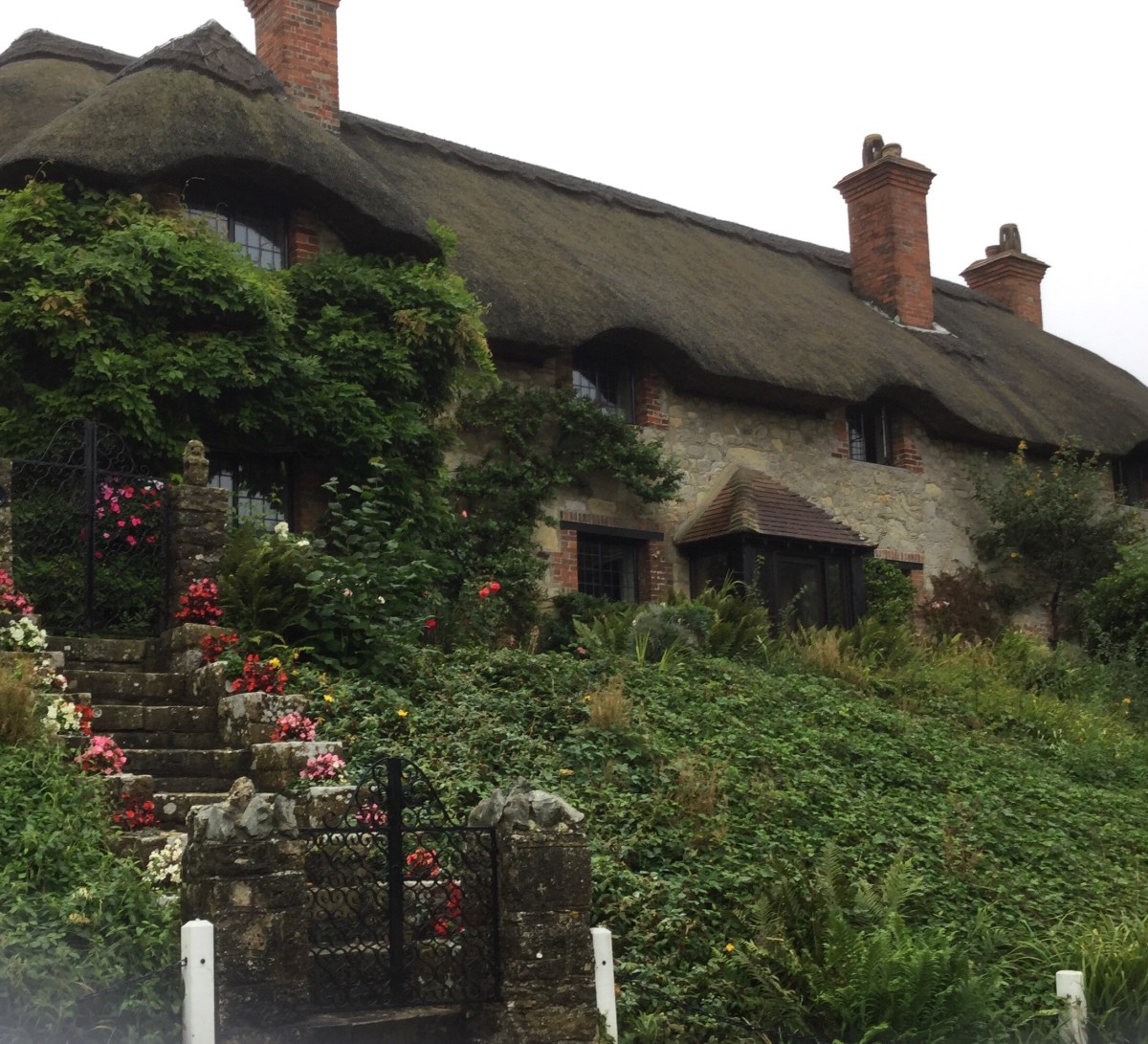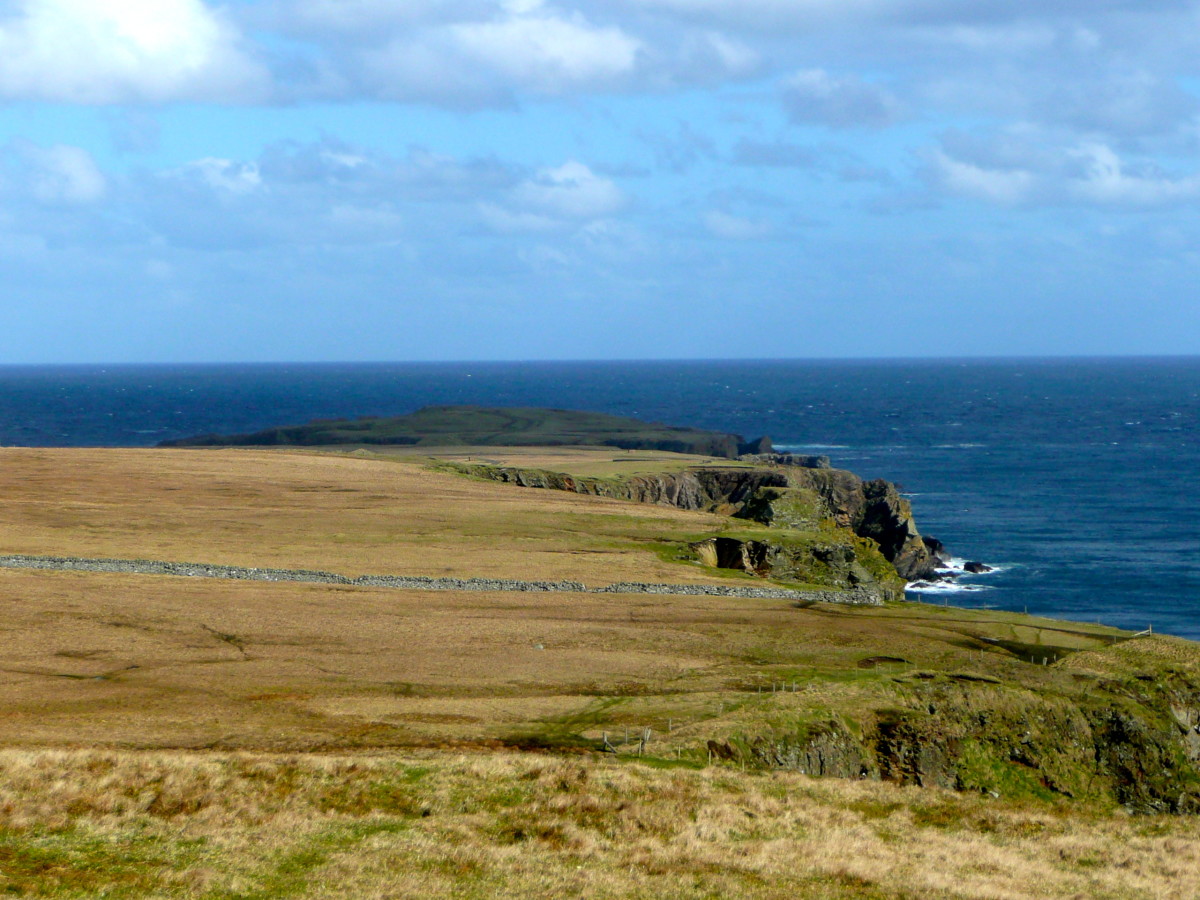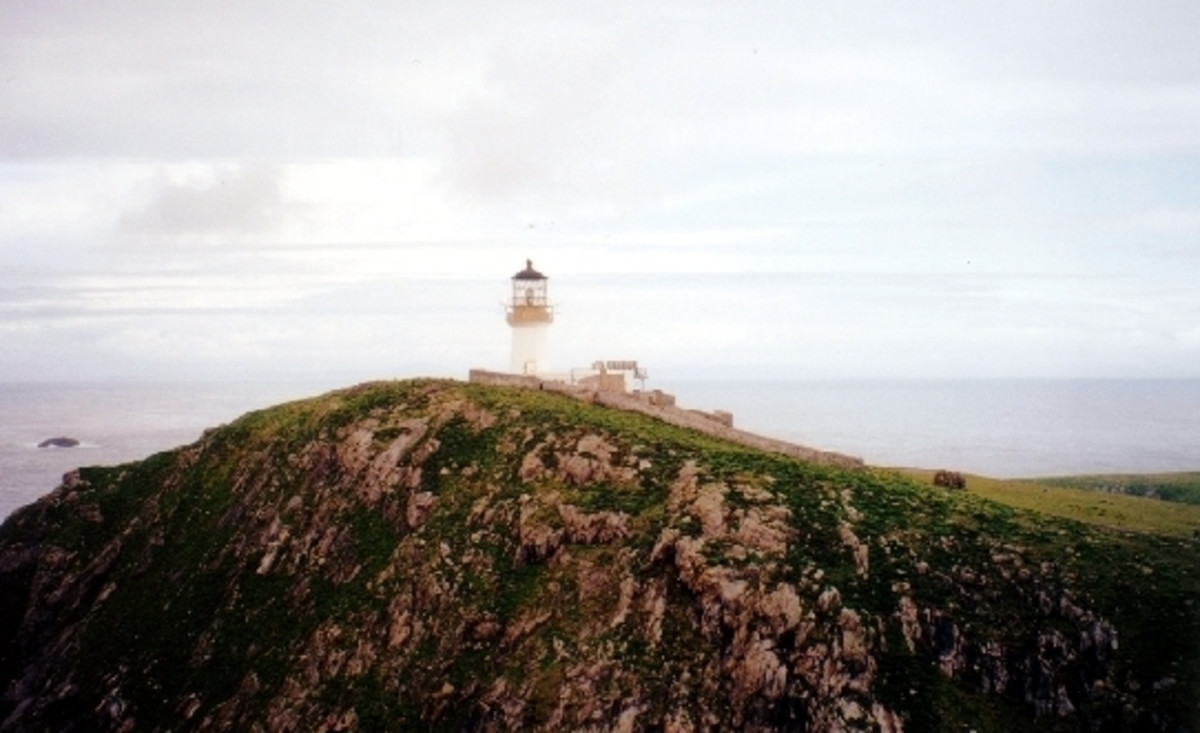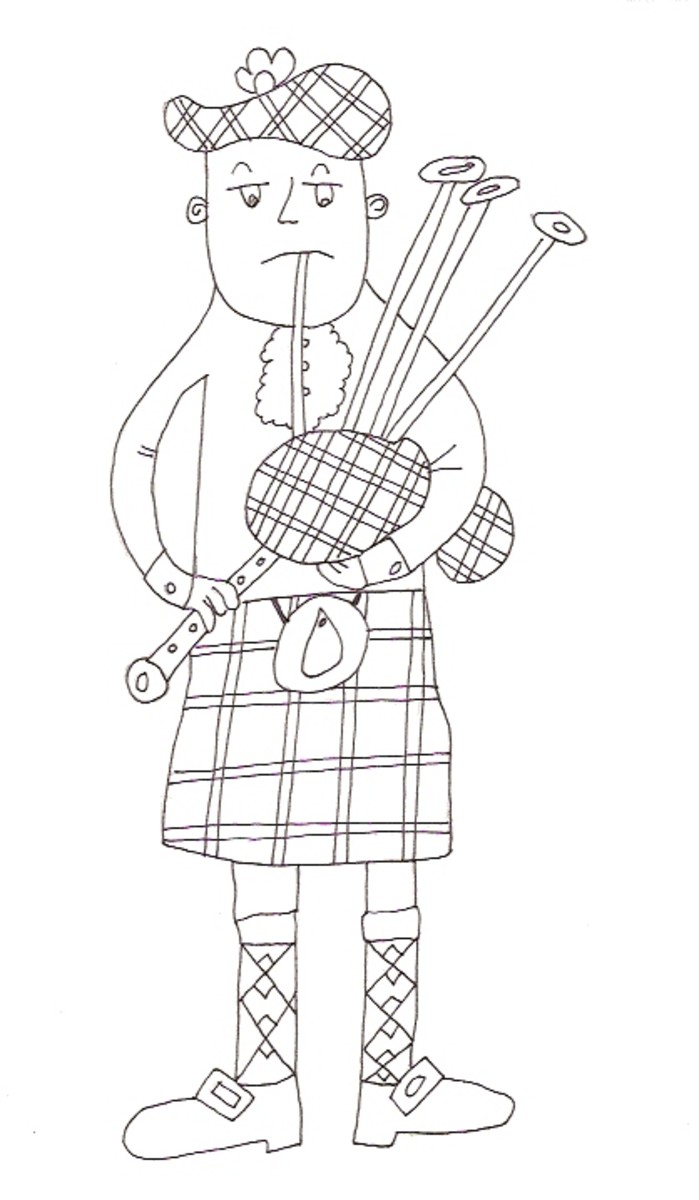- HubPages»
- Travel and Places»
- Visiting Europe»
- United Kingdom
Mull of Kintyre, Scotland
The Mull of Kintyre is a wild and remote place, made world-famous by Paul McCartney and Wings way back in 1982 when their hit single, called Mull of Kintyre, reached the number one spot in both the UK and the US and stayed their for an incredible 20 weeks, breaking all records at the time.
It's quite strange to think that Paul wrote this song while staying at his farm-house near Campbeltown, where he guarded his privacy fiercely. The result of this massive hit was an increase in visitors to Kintyre and so his privacy was harder to maintain.
The Mull of Kintyre is a beautiful, barren scene. On a steep rocky hillside sits a lonely lighthouse, continually sending its warning beacon to mariners crossing round the choppy waters where the Firth of Clyde meets the Atlantic Ocean.
The name Mull is derived from the Gaelic word maol, meaning a promontory or bare round hill. Many places in Scotland have the name Mull in their title -Isle of Mull, Mull of Galloway to name two, and the name Mull of Kintyre simply describes the headland at the end of the peninsula of Kintyre, in the West Coast of Scotland.
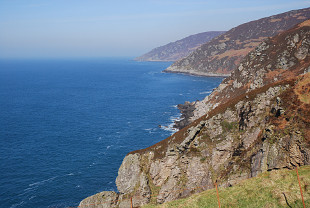
Mists Rolling in from the Sea
A more barren place is hard to imagine. Lichen-covered igneous rocks dominate the landscape, and even the summer heather struggles to grow. The photos here were taken on a clear day, but as Paul McCartney described in his song, many times the view of Rathlin Island in Northern Ireland, barely 12 miles away across the channel, is completely obscured by the omnipresent mists that do indeed roll in from the sea.
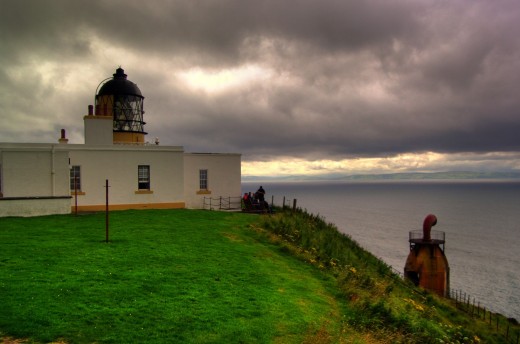
Mull of Kintyre Lighthouse
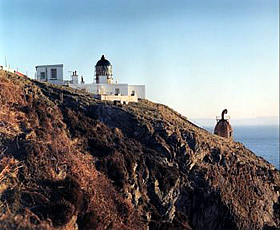
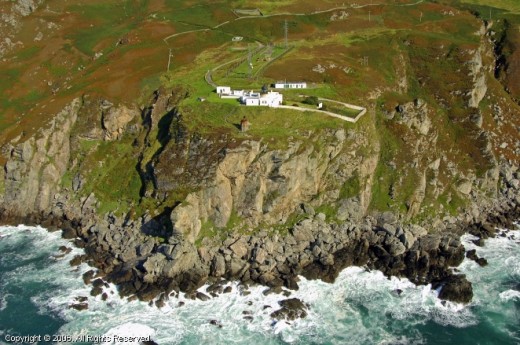
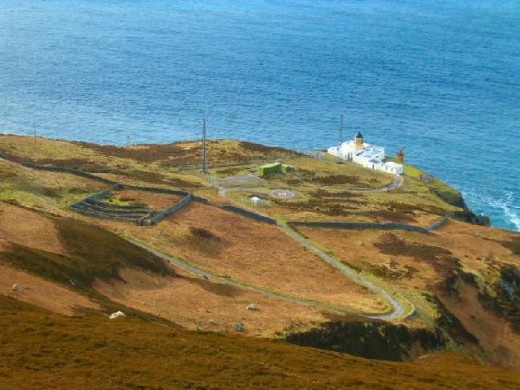
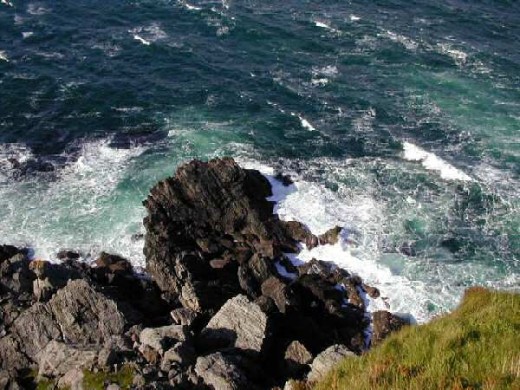
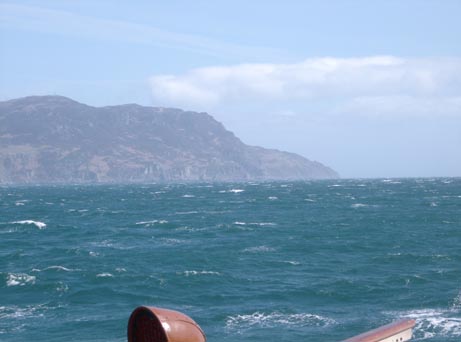
The building of the Mull of Kintyre lighthouse
In 1782, the British Isles were struck by a succession of tempestuous storms such had never been experienced before. Many fishermen were unable to put to sea at all, but hunger and desperation forced some to try.
One dark and stormy night, two separate herring vessels were capsized while rounding the Mull of Kintyre and many lives were lost.
This spurred on the building of the first lighthouse which was built by Robert Stevenson of the famous lighthouse building family. Robert Stevenson's great nephew was Robert Louis Stevenson, the author.
The actual building of the Mull of Kintyre lighthouse was extremely difficult due to its remote and inaccessible location. Supplies had to be landed by boat 6 miles away, then transported on horseback over the rough mountainous terrain to the site. Each horse carried a maximum load of 1 cwt (112lbs) and the journey alone was a full day's work for each horse.
It took two 'seasons' to build the lighthouse, only being finally completed in the spring of 1788. It was actually ready by November 1787, but they delayed moving in the lantern until the following Spring because of the risk to the apparatus during the winter storms.
The lighthouse was rebuilt between 1822 and 1830 to conform to new regulations brought in by the Lighthouse Commissioners Establishment Policy. A fog signal was added in 1876, and ran on steam. This was necessary because of the frequent fogs that blanket the area making a light invisible to passing ships.
In 1906 the light was changed from a continuous to a flashing light, and its strength increased from 8,000 to 281,000 candlepower. In 1976, the light was changed over the mains electricity and increased to 1.575,000 candlepower.
In 1996, the lighthouse was fully automated and the light changed to a 250 watt multi-vapor lamp,.
As there is no longer any need for a live-in lighthouse keeper, the lighthouse accommodation is now available to let for short-stay vacation rentals.
If you are interested, contact the National Trust for Scotland at their Edinburgh HQ on 0044 0131 243 9331 or email holidays@nts.org.uk
The foghorn, which is now a fully automated piece of equipment, is situated 1 km away from the lighthouse which should permit some sleep for anyone staying there during foggy weather.
Mull of Kintyre
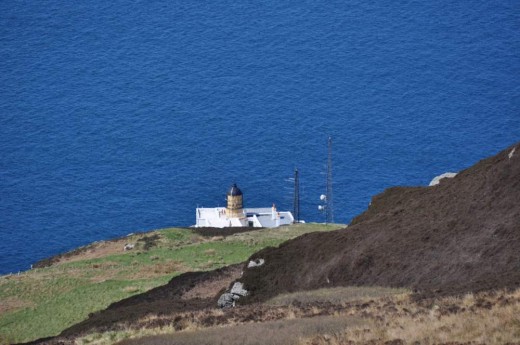
Mull of Kintyre Visitors sign
The smaller writing on the sign that you may have difficulty reading on the photo says:
Congratulations on safely negotiating one of Scotland's most exciting roads. Cars must now be left safely in the car park - hairpin bends and steep gradients on the road to the lighthouse are even worse than those you have left behind!
Avoid putting lives at risk - communications here are poor including mobile telephone coverage. The terrain is difficult with hazardous hills and cliffs prone to rapidly changing weather conditions. Remember this is home to sheep and a variety of wildlife - please keep dogs on leads.
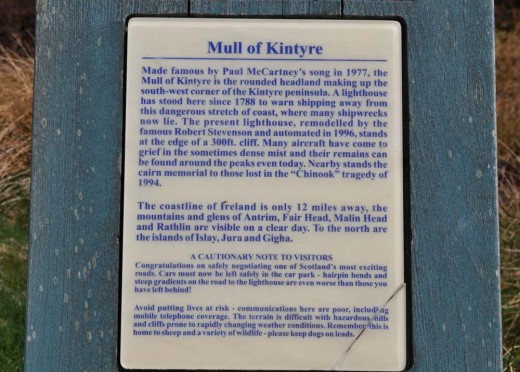
Memorial to those lost in the Chinook disaster
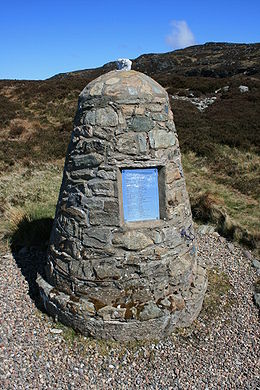
Chinook Disaster, Mull of Kintyre, 1994
There is a helicopter landing pad here, and this brings us to the Chinook disaster of 1994.
On the 2nd of June, at about 6pm in the evening, an RAF Chinook helicopter carrying 4 senior and experienced crew members and 25 civilians, among whom were most of the UK's senior Northern Ireland Intelligence Officers, crashed on the Mull of Kintyre, killing all those on board instantly.
They were travelling from Northern Ireland to a conference at Fort George, near Inverness in the north of Scotland.
The twin-engined Boeing Chinook ZD576 crashed in the mountainside about 500 metres from the lighthouse. Due to heavy mist, no-one witnessed the actual crash although many heard it. The noise in a normally quiet location where only the sound of crying seagulls interrupts the steady pounding of the tidal waves far below, must have been horrendous.
A subsequent fatal accident inquiry blamed pilot error, but this has been questioned (and indeed overturned in a subsequent court ruling) and the final reason for the crash may never be known.
Enquiries are still ongoing today.
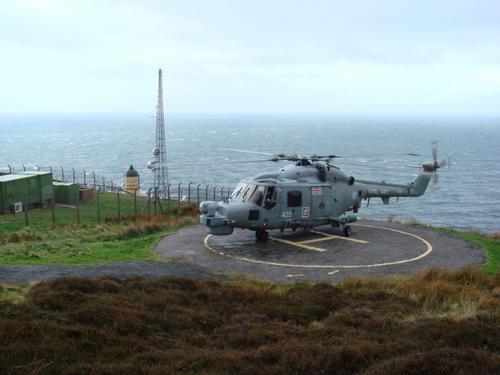
The Mull of Kintyre lighthouse lies in a position which is totally exposed to the elements and the prevalent south west winds which flow via the Gulf Stream.
This prevents the Mull of Kintyre from ever becoming bitterly cold. Indeed, palm trees flourish on the promenade in nearby Campbeltown.
A former lighthouse keeper was a keen gardener, and it was he who built several dry stone walls (that can be clearly seen in a photograph above, near the helipad) to protect his crops from the worst of the winds.
Indeed, as testament to the frequent rain which falls in Scotland, you can see the lush green of the grass on the drying green someone has taken the time to build outside the lighthouse, no doubt with the help of some topsoil sorely lacking on the terrain of the Mull of Kintyre.
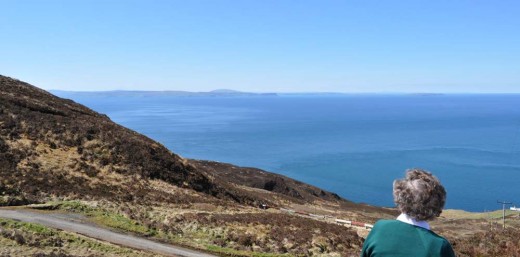
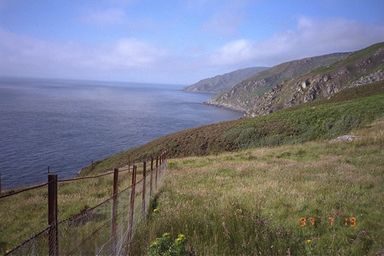
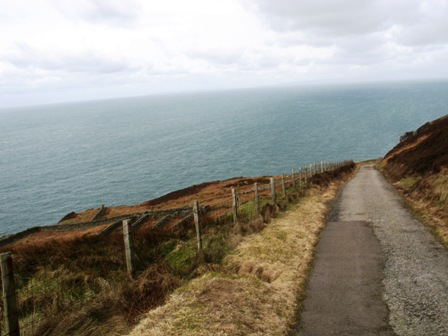
How to get to the Mull of Kintyre
By Road:
From Glasgow, follow the A82 which becomes the A83 at Tarbet just after Loch Lomond and follow the signposts for another 100 miles or so until you reach Campbeltown. From Campbeltown, take the signposted road to Southend, about 8 miles away, and from Southend take the signposted route towards the Mull of Kintyre itself. This journey will take you along a windy single track route for about another 8 miles. Where the road ends there is a car park and you must walk the rest of the way, unless you have hired the lighthouse cottage, in which case you can take your car down the even steeper and windier road to the lghthouse itself.
By Air:
Take a flight to Glasgow Airport, then another flight from there to Campbeltown Airport which is situated on the former RAF Machrihanish base, about 3-4 miles from the town itself. You can either hire a taxi or rent a car to take you the rest of the way.
Mull of Kintyre at Dusk
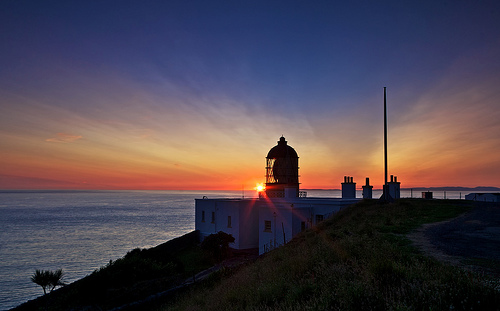
Mull of Kintyre by Paul McCartney and Wings, featuring Campbeltown Pipe Band
The Mull of Kintyre on to the left of Southend on this map.
A beautiful view of Kintyre to leave you with
